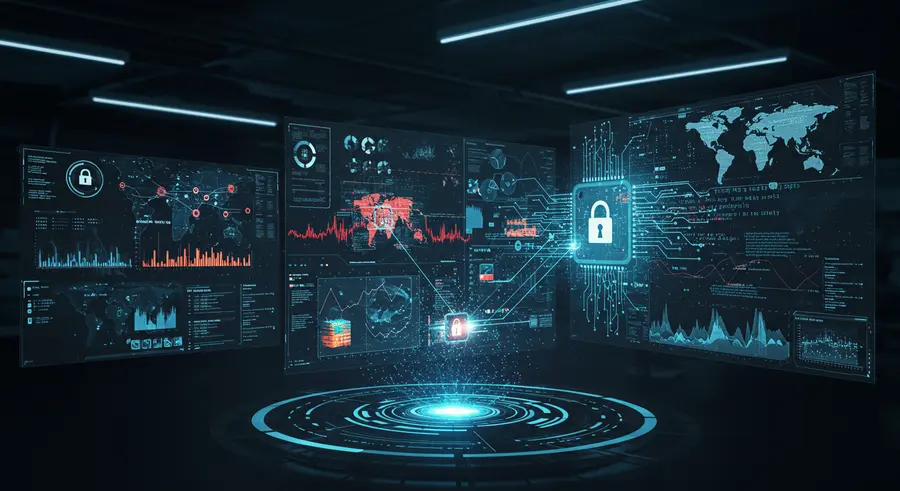Appearance

Welcome, cybersecurity enthusiasts and tech innovators! 👋 In today's rapidly evolving digital landscape, traditional security measures are often playing catch-up against sophisticated cyber threats. But what if we could predict and neutralize threats before they cause significant damage? Enter the revolutionary world of AI-Powered Threat Detection and Automated Response.
This isn't just about faster alerts; it's about transforming our approach to cybersecurity from reactive to proactive, intelligent, and highly efficient. Let's dive deep into how Artificial Intelligence (AI) is redefining the future of threat detection and incident response.
The Evolving Threat Landscape and the Need for AI
Cyber threats are no longer simple. They are complex, polymorphic, and often leverage advanced techniques to bypass conventional defenses. The sheer volume of data generated by modern systems makes manual analysis virtually impossible for human security teams. This is where AI steps in.
AI, particularly Machine Learning (ML), can process vast amounts of data in real-time, identify subtle patterns, detect anomalies, and even predict potential attacks with remarkable accuracy. It learns from historical data, adapts to new threats, and continuously improves its detection capabilities.
How AI Enhances Threat Detection
Real-Time Anomaly Detection: AI algorithms establish a baseline of normal network and user behavior. Any deviation from this baseline – no matter how small – can be flagged as suspicious. This allows for the detection of zero-day attacks and insider threats that traditional signature-based systems might miss.
- Example: An AI system might detect an unusual login attempt from a new geographical location, a sudden surge in data exfiltration, or a user accessing resources outside their typical work hours, triggering an alert.
Predictive Analytics: By analyzing historical attack data and threat intelligence feeds, AI can identify trends and predict potential future attack vectors. This enables organizations to strengthen their defenses proactively.
Behavioral Analysis: AI can profile the behavior of users, applications, and devices. This is crucial for identifying sophisticated threats like polymorphic malware or advanced persistent threats (APTs) that constantly change their signatures.
Automated Vulnerability Management: AI can scan systems for vulnerabilities, prioritize them based on potential risk, and even suggest remediation steps, significantly reducing the attack surface.
Malware Analysis and Classification: AI can quickly analyze new malware samples, classify them, and understand their characteristics, leading to faster development of countermeasures.
The Power of Automated Response
Detection is only half the battle. Once a threat is identified, a rapid and effective response is crucial to minimize impact. AI can automate many aspects of incident response, leading to faster containment and recovery.
- Automated Containment: Upon detecting a high-severity threat, an AI-powered system can automatically isolate affected systems, block malicious IPs, or revoke access credentials, preventing the attack from spreading.
- Contextual Alerting and Prioritization: AI can enrich alerts with contextual information and prioritize them based on severity and potential impact, allowing human analysts to focus on the most critical incidents.
- Playbook Execution: For known threat types, AI can trigger predefined response playbooks, executing a sequence of actions without human intervention, such as initiating a forensic snapshot or deploying a patch.
- Threat Hunting Assistance: AI tools can assist human threat hunters by sifting through massive datasets, highlighting suspicious activities, and suggesting areas for deeper investigation.
Integrating AI with Your Incident Response Plan
While AI offers immense potential, it's not a silver bullet. A successful AI-powered cybersecurity strategy requires seamless integration with a well-defined incident response plan, as discussed in our related article: Building an Effective Incident Response Plan.
Key aspects of integration include:
- Human-AI Collaboration: AI should augment, not replace, human security analysts. AI handles the mundane, high-volume tasks, freeing up human experts for complex problem-solving, strategic thinking, and decision-making.
- Data Quality: The effectiveness of AI models heavily relies on the quality and quantity of training data. Organizations must ensure they have clean, comprehensive, and diverse data feeds from all relevant sources.
- Continuous Learning and Adaptation: AI models need to be continuously trained and updated to adapt to new attack techniques and evolving threat landscapes.
- Ethical AI and Bias Mitigation: Ensuring that AI systems are fair, transparent, and do not introduce biases that could lead to false positives or missed threats is paramount.
The Future is Now: AI in SOC Operations
The Security Operations Center (SOC) of the future will be heavily AI-driven. AI will automate routine tasks, provide real-time intelligence, predict attacks, and enable proactive defense strategies. This shift allows SOC teams to move from a reactive "alert fatigue" model to a more strategic and predictive posture, significantly enhancing an organization's overall security resilience.
Conclusion
AI-powered threat detection and automated response are not just buzzwords; they are essential advancements revolutionizing how we defend our digital assets. By embracing these technologies, organizations can achieve unparalleled visibility into their networks, detect threats with greater precision, respond with unprecedented speed, and ultimately build a more secure and resilient digital future.
Stay secure, stay curious, and keep innovating! 🛡️✨